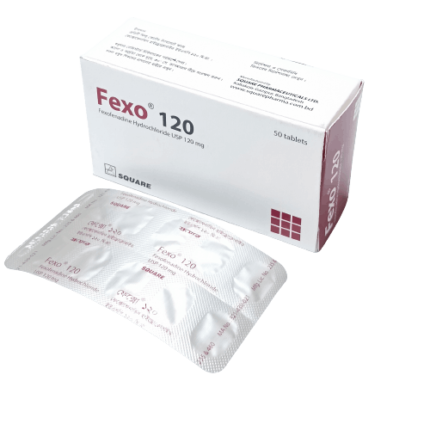Avlosef 250 mg
32.08৳ Strip
- Product Name: Avlosef
- Type: Broad-spectrum antibiotic
- Indications: Treats infections caused by sensitive Gram-positive and Gram-negative bacteria, including:
- Respiratory infections (e.g., bronchitis, pneumonia)
- Urinary tract infections (e.g., cystitis, pyelonephritis)
- Skin and soft tissue infections (e.g., cellulitis, abscesses)
- Active Ingredient: Cephradine, which targets bacterial cell walls
- Forms: Available in oral and injectable forms
- Dosage: Suitable for adults and children; dosage adjustments may be needed for renal impairment
- Note: Consult a healthcare professional before use.
 Brand
Brand
|
ACI Limited |
|---|---|
 Generics
Generics
|
Cephradine |
 Type
Type
|
Capsule |
Indications for Avlosef
Avlosef is prescribed for managing infections caused by bacteria sensitive to its effects. This includes:
- Upper Respiratory Tract Infections: Such as sinusitis, pharyngitis, tonsillitis, laryngotracheobronchitis, and otitis media.
- Lower Respiratory Tract Infections: Including acute and chronic bronchitis, lobar pneumonia, and bronchopneumonia.
- Urinary Tract Infections: Such as cystitis, urethritis, and pyelonephritis.
- Skin and Soft Tissue Infections: Like abscesses, cellulitis, furunculosis, and impetigo.
Microorganisms Susceptible to Avlosef:
- Gram-Positive Bacteria: Staphylococci (both penicillin-sensitive and resistant strains, including penicillinase-producing species), Streptococci, Streptococcus pyogenes (beta-hemolytic), and Streptococcus pneumoniae.
- Gram-Negative Bacteria: Escherichia coli, Klebsiella spp., Proteus mirabilis, Haemophilus influenzae, Shigella spp., Salmonella spp. (including Salmonella typhi), and Neisseria spp.
Avlosef is effective against many strains of E. coli and Staphylococcus aureus that produce penicillinase and are resistant to ampicillin.
Pharmacology
Avlosef contains Cephradine, a broad-spectrum, semisynthetic bactericidal antibiotic. It targets both Gram-positive and Gram-negative bacteria. Cephradine’s primary action site is the bacterial cell wall, where it inhibits the cross-linking of peptidoglycan. This disruption leads to cell wall damage and bacterial lysis due to osmotic pressure.
Dosage & Administration
For Oral Administration:
- Adults:
- Urinary Tract Infections: 500 mg four times daily or 1 g twice daily. Higher doses may be required for severe or chronic infections, including complications like prostatitis and epididymitis.
- Respiratory Tract Infections: 250-500 mg four times daily or 500 mg-1 g twice daily, based on infection severity and site.
- Skin and Soft Tissue Infections: 250-500 mg four times daily or 500 mg-1 g twice daily, depending on infection severity and site.
- Children:
- General Dosage: 25-50 mg/kg per day in two to four divided doses.
- Otitis Media: 75-100 mg/kg per day in divided doses every 6 to 12 hours.
- Maximum Daily Dosage: 4 g.
- Elderly: Standard adult dosing is generally appropriate, but patients with renal or hepatic impairment should be monitored.
For Injectable Administration:
- Adults: Typically, 2-4 g daily in four divided doses, up to 8 g daily. For prophylaxis, a single preoperative dose of 1-2 g is administered intramuscularly or intravenously.
- Children: 50-100 mg/kg daily in four divided doses, up to 300 mg/kg daily for severe infections.
Drug Interactions
Using nephrotoxic drugs like aminoglycosides alongside Cephradine can increase the risk of kidney damage. Diuretics and probenecid may also heighten renal toxicity risks.
Contraindications
Cephradine should not be used in individuals with known hypersensitivity to cephalosporins.
Side Effects
Common side effects include gastrointestinal disturbances. Hypersensitivity reactions are more likely in those with a history of allergies, asthma, hay fever, or urticaria. Rare effects include glossitis, heartburn, dizziness, chest tightness, nausea, vomiting, diarrhea, abdominal pain, vaginitis, and Candida overgrowth. Serious side effects may involve blood disorders, immune system reactions, and hepatic or renal issues.
Pregnancy & Lactation
While animal studies have not shown teratogenic effects, safety in pregnancy is not fully established. Cephradine is excreted in breast milk, so it should be used with caution in lactating mothers. Patients should avoid operating hazardous machinery if experiencing dizziness.
Precautions & Warnings
Prolonged use may lead to superinfection due to resistant organisms. Use cautiously in patients with penicillin allergies due to potential cross-sensitivity. Cephalosporins can yield a positive Coombs test result and a false positive urine glucose test. Adjust dosage for renal impairment.
Use in Special Populations
- Renal Impairment: Adjust dosage based on creatinine clearance. Refer to detailed dosing guidelines for specific levels of renal function.
- Paediatric Dosages: Should not exceed adult recommendations regardless of infection severity.
Overdose Effects
Overdose symptoms are generally non-specific and include nausea, vomiting, and diarrhea. Supportive treatment is recommended, and gastric lavage may be necessary for large ingestions.
Therapeutic Class
First-generation Cephalosporins.
Storage Conditions
Reconstituted Avlosef Suspension should be used within 7 days at room temperature or 14 days in a refrigerator. Injection solutions should be used within 2 hours at room temperature or up to 12 hours when stored at 5°C. The color may vary from light to straw yellow, but this does not affect potency. Keep out of reach of children and use only with a physician’s prescription.













Reviews
There are no reviews yet.